|
|
|
Sort Order |
|
|
|
Items / Page
|
|
|
|
|
|
|
| Srl | Item |
| 1 |
ID:
130710
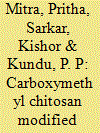

|
|
|
|
|
| Publication |
2014.
|
| Summary/Abstract |
The feasibility of carboxymethyl chitosan intercalated montmorillonite (CMCTS-MMT) clay used as a low-costand effective adsorbent for removal of cationic dye, crystal violet from the aqueous solution has been investigated.The synthesis of CMCTS-MMT was confirmed from the analytical information based on the characterization carried out by Fourier transformation infrared spectroscopy, x-ray diffraction data. During the removal process, batch technique was used and the effect of initial dye concentration, pH, temperature and weight ratio variation of sample composition were evaluated. Sorption process was analysed using pseudo-first order and pseudo-second order kinetic models. The data showed that the second order kinetic model was more appropriate for the absorption of thepresent dye. The equilibrium adsorption isotherms have been analyzed with the help of Langmuir, Freundlich and Redlich-Peterson analytical models. It was observed that the experimental data correlated reasonably well by the Redlich-Peterson and Langmuir isotherms. The desorbed CMCTS-MMT could be reused for adsorption of cationicdye. To investigate the changes in surface morphology of CMCTS-MMT after sorption, scanning electron microscopy analysis were done before and after adsorption of the cationic dye. Finally, the results in this study confirmed thatCMCTS-MMT may be an attractive contender for removal of cationic dyes from the waste water.
|
|
|
|
|
|
|
|
|
|
|
|
|
|
|
|
| 2 |
ID:
130748
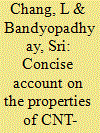

|
|
|
|
|
| Publication |
2014.
|
| Summary/Abstract |
Recently it has been reported in the technical literature that carbon nanotubes (CNTs) have distinct effects on thermal, mechanical and electric properties of epoxy resins. Compared to single-walled nanotubes (SWCNT), multiwalled nanotubes (MWCNT) apparently show greater improvements. The maximum aspect ratio (L/D) of CNT is reportedly as high as 138,000,000. In addition, the carbon nanotubes when treated with surface modifier to generate functional groups on their surface can afford to provide better improvement of the properties of the epoxy based CNT-particulate composite system. There are a number of factors that can influence the properties of epoxy-CNT systems. This paper examined the technical contents from selective references and made an attempt to highlight the general understanding of the properties and performance of epoxy - CNT particulate composite systems
|
|
|
|
|
|
|
|
|
|
|
|
|
|
|
|
| 3 |
ID:
130739
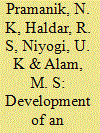

|
|
|
|
|
| Publication |
2014.
|
| Summary/Abstract |
When Nylon 66 was irradiated by an optimum dose of e-beam in presence of polyurethane as impact modifierin combination with triallyl is ocyanurate as cross-linker, a superior performance was observed for the irradiated nylon 66. Significant improvement of properties, such as hardness, tensile strength, flexural modulus and impact strength was obtained on radiation processing of nylon 66 by e-beam. More interestingly, percent water absorptionof such irradiated nylon 66 was reduced substantially. Improvement of mechanical properties and reduction of water absorption of irradiated nylon 66 were due to the cross-linking of the polymer system. Increase of cross-linkingwith dose of e-beam was verified by the increased gel content at higher doses. Irradiated nylon 66 showed betterdimensional stability than those achieved with pristine nylon 66. The increase in dimensional stability may beattributed to reduction in crystallinity with increasing dose of e-beam as revealed by DSC studies.
|
|
|
|
|
|
|
|
|
|
|
|
|
|
|
|
| 4 |
ID:
130712


|
|
|
|
|
| Publication |
2014.
|
| Summary/Abstract |
Direct fluorination is one of the most important and effective method to modify the polymer surface. It isa simple and fast method that allows the simultaneous treatment of outer and inner surfaces of complex shaped polymeric materials. Poly-p-phenylene terephthalamide fibers which are a very important class of material was surface modified by direct fluorination. An extensive characterization of both the virgin and the fluorinated materials were performed by various techniques (XRD, FT-IR, Surface energy and DSC, TGA). From these data, possible effects of fluorination are discussed.
|
|
|
|
|
|
|
|
|
|
|
|
|
|
|
|
| 5 |
ID:
130733
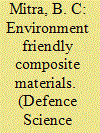

|
|
|
|
|
| Publication |
2014.
|
| Summary/Abstract |
Biocomposites can supplement and eventually replace petroleum-based composite materials in several applications. Several critical issues related to bio-fiber surface treatments is to make it a more suitable matrix for composite application and promising techniques need to be solved to design biocomposite of interest. The main motivation for developing biocomposites has been and still is to create a new generation of fiber reinforced plastics material competitive with glass fiber reinforced ones which are environmentally compatible in terms of products, use and renewal. There is an immense opportunity in developing new biobased products, but the real challenge isto design suitable bio-based products through innovation ideas. Green materials are the wave of the future. Bio nano composites have very strong future prospects, though the present low level of production, some deficiency in technology and high cost restrict them from a wide range of applications.
|
|
|
|
|
|
|
|
|
|
|
|
|
|
|
|
| 6 |
ID:
130709


|
|
|
|
|
| Publication |
2014.
|
| Summary/Abstract |
Novel organic-inorganic semiconducting hybrid material is developed by chemically grafting polyaniline (PANI) onto an inorganic template, Laponite. The surface active silanol groups of the Laponite sheets were silylated with an aniline functionalised 3-phenylaminopropyltrimethoxysilane (PAPTMOS) coupling agent followed by deposition of PANI onto the silylated surface. The method includes the reaction of Laponite with PAPTMOS dissolved in a very small amount of methanol at 110 °C for 44 h in a vacuum oven, interaction of the silylated product with PANI via in situ polymerisation of aniline and one-step isolation process by means of the removal of the non-connected PANI with N-methylpyrrolidinone-diethylamine binary solvent. After isolation and re-doping with methane sulfonic acid the Laponite-PAPTMOS-PANI hybrid becomes electrically conductive. The chemical attachment of PANI with silylated Laponite in the hybrids were characterised by Fourier transform infrared spectroscopy, X-ray photoelectron spectroscopy, elemental analysis, and scanning electron microscopy.
|
|
|
|
|
|
|
|
|
|
|
|
|
|
|
|
| 7 |
ID:
130749
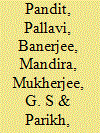

|
|
|
|
|
| Publication |
2014.
|
| Summary/Abstract |
Poly (L lactic acid) (PLLA) ultrathin films of various thicknesses were prepared by spin coating method and investigated by using vibrational spectroscopic techniques such as FTIR and Raman. The analysis has been done in two parts: first one is verification of structural mode to understand the visibility of characteristic band to confirm the PLLA structure; where interestingly, as the thickness of the film increased, the structural features were found to be more explicit. The second part of the study was to observe the features of the film having been annealed for 1 h in two separate temperatures, one at specific annealing temperature 120 °C and the other at 160 °C to enable PLLA chains to reorient to get crystallized from its soften state at two such specific temperatures. The isothermal crystallization behavior of PLLA film at 120 °C and 160 °C from the melt was monitored by FTIR as well as Raman spectroscopies. More importantly, the band at 921 cm-1 corresponds to ? crystalline phase of PLLA has been observed even in this ultrathin film with the effective application of temperature as selected in this study.
|
|
|
|
|
|
|
|
|
|
|
|
|
|
|
|
| 8 |
ID:
130714


|
|
|
|
|
| Publication |
2014.
|
| Summary/Abstract |
Great interest has aroused in developing high impact resistant fabrics based on the incorporation of a shear thickening fluid (STF) into high performance fabrics (Kevlar). This work developed a shear thickening fluid enhanced fabrics and the influence of the shear thickening fluid types against spike impact and the impact resistance performance were investigated. Silica nano-particle impregnated Kevlar fabrics exhibit significantly enhanced ballistic performance while retaining flexibility. It was found that fabrics impregnated with functionalized nanoparticles offer multiple resistance to the penetration of a sharp impactor. The improvement in protection is traced by the formation of siloxane bonds during functionalization. It exhibits significant improvement in shear stiffness and aslight increase in tensile stiffness. The impact strength properties of all samples were tested using impact testingand quasi-static testing apparatuses. Chemical compositions and microscopic structures were analyzed with Fouriertransform infrared spectroscopy and scanning electron microscopy. The current study clearly displays a significant enhancement in penetration resistance of Kevlar fabric impregnated with different combination of STF's.
|
|
|
|
|
|
|
|
|
|
|
|
|
|
|
|
| 9 |
ID:
130711


|
|
|
|
|
| Publication |
2014.
|
| Summary/Abstract |
A range of hazardous organic and inorganic compounds, and metal ions generated by human and industrialactivities leads to serious concerns for environments. Adsorption technologies based on polymeric materials are beingused to remove toxic substances from air and wastewater streams. Keratin protein, found abundantly in sheep's wool,human hair and bird feathers, is an interesting and potentially useful renewable biopolymer. It contains a variety offunctional groups on the backbone and side chains of the proteins, and is an ideal component to fabricate a rangeof novel adsorbent systems for separation of toxic pollutants via physisorption or chemisorption mechanisms. Inthis review article, the key activities on keratin research and development with respect to the novel properties ofkeratin proteins and their utilization as absorbents or filtration systems are summarized. It is apparent that keratinsin the form of loose fibers, non-woven fabrics, short fibers or particles, membranes and colloids can be used as absorbents for air filtration and wastewater treatment. Keratin materials have potential to be applied in biological and chemical defence applications, and also in protection against radioactive elements.
|
|
|
|
|
|
|
|
|
|
|
|
|
|
|
|
| 10 |
ID:
130743


|
|
|
|
|
| Publication |
2014.
|
| Summary/Abstract |
In this paper, we report the embedment of Cobalt (Co) nanoparticles by ion beam sputtering (IBS) in poly(vinylalcohol) (PVA) substrate to prepare nano composite film. The Co film of 5 nm was deposited on PVA by IBStechnique. Formation of Nano crystalline Co with HCP phase is revealed in GIXRD pattern of the film which alsoindicates that there is no change in the crystalline structure of PVA even after sputtering of the metallic nanoparticles.The average particle size of Co nanoparticles as evaluated using Scherer formula is found to be about 2 nm. UVVisabsorption spectrum of the film showed SPR peaks of Co metal in their nano size level embedded in the PVAmatrix system. XPS study confirms the metallic nature of Co MOKE studies show that the nanocomposite film isferromagnetic with HcÐÐ of. 42.8 Oe.
|
|
|
|
|
|
|
|
|
|
|
|
|
|
|
|
| 11 |
ID:
130713


|
|
|
|
|
| Publication |
2014.
|
| Summary/Abstract |
There is an increasing demand for designing controlled drug delivery systems with materials which are morebiocompatible, economical and materials which can be processed easily. Poly (vinyl alcohol) (PVA) and hyaluronic acid (HA) are promising polymers for applications in drug delivery. PVA forms gel based on the acetal bridges when cross linked with glutar aldehyde (GA). On the other hand, HA a natural polymer, forms gel with divinyl sulfone(DVS) as a cross linker. PVA and HA blends upon crosslinking PVA with GA or HA with DVS, in the presence of the other polymer, form gels that are more adaptable to the drug delivery systems. In this work, the mechanical properties and swelling behaviour of PVAHA gels were characterized. The effect of composition on visco elasticmoduli and degree of swelling was determined. The storage modulus (G?) of various gels made of PVA, HA and PVAHA blends were measured using rheology and compared with the values available in the literature. Swelling properties were measured and compared among various PVA and HA gels. Collagen is added to PVA solution and the rheological properties were measured in the gel state. Based on the values of storage modulus, gels of various compositions of PVA, HA and collagen might be selected as potential biomaterials for drug delivery system depending on careful understanding the type of application.
|
|
|
|
|
|
|
|
|
|
|
|
|
|
|
|
| 12 |
ID:
130735
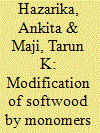

|
|
|
|
|
| Publication |
2014.
|
| Summary/Abstract |
Technological development of wood polymer composites (WPC) is a very promising approach to overcome most of the disadvantageous properties of wood products, for example their poor mechanical strength, poor dimensional stability, susceptibility to fungal attack, weathering and the like. To find the substitute for costly items of hard wood, suitable technologies have been developed to modify softwood to meet specific end-use requirements. Various vinyl monomers and/or copolymers or thermosetting resin in combination with different types of cross linking agents, flame retarding agents have been used to improve the properties of wood. Nanotechnology is a new area of science and technology which opens up new opportunities to develop wood based products with desired properties. Now-a-days government is making strict legislations to promote green technology for the protection of environment world wide. With the depletion of petroleum resources at alarming rate, it is high time to replace petroleum-based products by some sustainable alternative products based on vegetable biomass. The bio-based resins obtained from renewable feedstock have been widely utilized by taking the advantages of easy availability, renewable nature and low cost. The green route of modification of wood is widely encouraged. With the progress of technological development, now it is possible to avoid the hazardous influence of organic solvents by using water as solvent or diluents formodification of wood. WPC has got tremendous scope for use in diverse areas of applications.
|
|
|
|
|
|
|
|
|
|
|
|
|
|
|
|
| 13 |
ID:
130750


|
|
Quantitative analysis of curing mechanisms of epoxy resin by mi
/ Cholake, Sagar T; Mada, Mykanth R; Raman, R.K. Singh; Bai, Yu, Zhao, Xl, Rizkalla, Sami, Bandyopadhyay, Sri
|

|
|
|
|
| Publication |
2014.
|
| Summary/Abstract |
This article informs the essence of major work done by a number of researchers on the analysis of two-step curing mechanism of diglycidyl ether of bisphenol A (DGEBA) epoxy resin in presence of amine curing agents using near- and mid-IR technology. Various peaks used as a marker for resin formation are discussed and their implementation is comprehensively studied. In addition to this, a wide range of information about the importance of reference peaks in both near-IR (NIR) and mid-IR (MIR) regions are congregated and their accuracy is audited. Also discrepancies observed by researchers in epoxy conversion (?) in NIR and MIR regions are reviewed to highlight the comparative advantages of both regions, one over the other.
|
|
|
|
|
|
|
|
|
|
|
|
|
|
|
|
| 14 |
ID:
130737
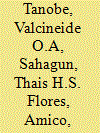

|
|
|
|
|
| Publication |
2014.
|
| Summary/Abstract |
Increasing environmental concern along with the drive to find substitutes for synthetic fibers and value added applications for low cost and renewable plant fibers have led to the development of composites based on biomaterials. One of the drawbacks encountered in such exercise is the lack of adhesion between the incorporated plant fibers and synthetic polymeric matrices. Such drawback can be reduced by appropriate treatment of fibers. This paper describes the chemical treatments used on sponge gourd (Luffa cylindrica) fibers of Brazil to prepare their composites with polyester resin. Production of short fiber-polymer composite as well as mat-polyester composites is presented here. Characterization of the composites in respect of evaluation of density, water absorption, thermalstability, tensile properties and impact strength were made and the results are discussed. Observed impact strengthand tensile properties are discussed based on the fractographic studies of the composites.
|
|
|
|
|
|
|
|
|
|
|
|
|
|
|
|
| 15 |
ID:
130746


|
|
|
|
|
| Publication |
2014.
|
| Summary/Abstract |
It is believed that addition of small amount of nanoclays in the neat epoxy and fiber reinforced epoxy composite system can improve the mechanical properties. The mechanical properties of most of polymer matrix composites are sensitive to testing rate. However, most of the researches were concentrated on the behavior of the polymer
matrix composites at high strain rates. The present research work is to investigate the role of clay on neat epoxy and glass-fiber reinforced epoxy composites, at low strain rates. The clay in terms of 1.5 wt%, 3 wt%, and 5 wt% are dispersed in the epoxy resin using mechanical stirring followed by sonication process. The corresponding glass/epoxy nanocomposites are prepared by impregnating the clay epoxy mixture by hand lay-up process. Characterization of the nanoclay is done by X-ray diffraction and Scanning Electron Microscopy. Tensile stress-strain curves are obtained at strain rates of 10-4 s-1, 10-3 s-1, 10-2 s-1, and 10-1 s-1 by a hydraulic machine reporting that, even at low strain rates, the longitudinal strength and stiffness increase as strain rate increases for all clay loadings. It is observed that the tensile modulus increases as the clay loading increases for both epoxy and glass/epoxy nanocomposites. It is also noticed that the longitudinal tensile strength decreases as the clay loading increases. The failed specimens show marked changes in the fracture surface with increased strain rate. Scanning electron microscopy is used to study the fiber/matrix/clay adhesion in fracture surfaces.
|
|
|
|
|
|
|
|
|
|
|
|
|
|
|
|
|
|
|
|
|